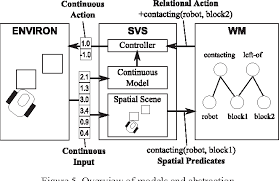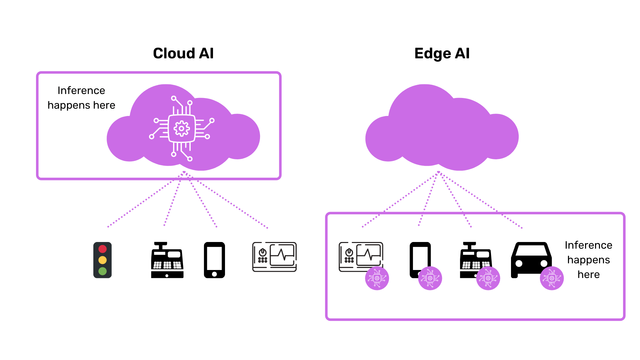
Reinforcement depth learning is a subfield in machine learning that combines both reinforcement learning and deeplearning. This subfield studies the issue of how a computing agent learns through trial-and-error. In short, reinforcement deep learning aims to train a machine to make decisions without being explicitly programmed. Among its many applications is robot control. This article will explore several applications of this research method. We'll discuss DM-Lab as well as the Way Off-Policy algorithm.
DM-Lab
DM-Lab is a software package consisting of Python libraries and task suites for the study of reinforcement learning agents. This package is used by researchers to build new models of agent behavior as well as automate the evaluation and analysis of benchmarks. This software is designed to allow reproducible and accessible research. It provides several task sets for implementing deep reinforcement-learning algorithms in an articulated model body simulation. Visit DM-Lab for more information.

Deep Learning combined with reinforcement learning has allowed for remarkable progress in a variety tasks. Importance Weighted Actor Learner Architecture (IMPALA) achieved a median human normalised score of 59.7% on 57 Atari games and 49.4% on 30 DeepMind Lab levels. While the comparison of the two methods is premature, the results prove their potential for AI-development.
Way Off-Policy algorithm
The terminal value function of previous policies is used by A Way Off-Policy reinforcement deep-learning algorithm to improve on-policy performance. This improves sample efficiency because it uses older samples that the agent has collected over time. This algorithm was tested in many experiments. It is comparable to MBPO when it comes to manipulation tasks as well as MuJoCo locomotion. It has also been tested against modelless and model-based algorithms to verify its efficiency.
The off-policy framework's main feature is its flexibility to accommodate future tasks, as well as being cost-effective in reinforcement learning situations. It is important to remember that off-policy strategies cannot only be used for reward tasks. They must also work with stochastic tasks. Future research should focus on other options for such tasks such as reinforcement-learning for self-driving vehicles.
Way Off-Policy
For evaluating processes, off-policy frameworks can be useful. However, they have several drawbacks. After a certain amount exploration, off-policy learning can become difficult. Furthermore, algorithm assumptions are susceptible to biases. A new agent that has been exposed to old experiences can behave differently from a newly-trained one. In addition, these methods cannot be limited to reward tasks; they are suitable for stochastic tasks.

The on-policy reinforcementlearning algorithm will typically evaluate the same policy and make improvements. If the Target Policy equals Behavior Policy, the algorithm will perform the exact same action. A different option is to do nothing based on existing policies. Off-policy learning is better for offline learning. Both policies are used by the algorithms. However, which is better for deep-learning?
FAQ
What are some examples AI applications?
AI can be used in many areas including finance, healthcare and manufacturing. Here are just some examples:
-
Finance - AI can already detect fraud in banks. AI can identify suspicious activity by scanning millions of transactions daily.
-
Healthcare - AI is used to diagnose diseases, spot cancerous cells, and recommend treatments.
-
Manufacturing – Artificial Intelligence is used in factories for efficiency improvements and cost reductions.
-
Transportation - Self Driving Cars have been successfully demonstrated in California. They are being tested across the globe.
-
Utilities use AI to monitor patterns of power consumption.
-
Education - AI can be used to teach. Students can use their smartphones to interact with robots.
-
Government - AI is being used within governments to help track terrorists, criminals, and missing people.
-
Law Enforcement - AI is being used as part of police investigations. Databases containing thousands hours of CCTV footage are available for detectives to search.
-
Defense - AI systems can be used offensively as well defensively. It is possible to hack into enemy computers using AI systems. Protect military bases from cyber attacks with AI.
What is the role of AI?
An algorithm is a set or instructions that tells the computer how to solve a particular problem. An algorithm is a set of steps. Each step is assigned a condition which determines when it should be executed. The computer executes each instruction in sequence until all conditions are satisfied. This continues until the final results are achieved.
Let's suppose, for example that you want to find the square roots of 5. You could write down every single number between 1 and 10, calculate the square root for each one, and then take the average. You could instead use the following formula to write down:
sqrt(x) x^0.5
This means that you need to square your input, divide it with 2, and multiply it by 0.5.
A computer follows this same principle. It takes the input and divides it. Then, it multiplies that number by 0.5. Finally, it outputs its answer.
What uses is AI today?
Artificial intelligence (AI), is a broad term that covers machine learning, natural language processing and expert systems. It is also called smart machines.
The first computer programs were written by Alan Turing in 1950. He was intrigued by whether computers could actually think. In his paper "Computing Machinery and Intelligence," he proposed a test for artificial intelligence. The test tests whether a computer program can have a conversation with an actual human.
John McCarthy, in 1956, introduced artificial intelligence. In his article "Artificial Intelligence", he coined the expression "artificial Intelligence".
Many types of AI-based technologies are available today. Some are easy and simple to use while others can be more difficult to implement. They can be voice recognition software or self-driving car.
There are two major categories of AI: rule based and statistical. Rule-based uses logic to make decisions. A bank account balance could be calculated by rules such as: If the amount is $10 or greater, withdraw $5 and if it is less, deposit $1. Statistics are used for making decisions. For instance, a weather forecast might look at historical data to predict what will happen next.
How does AI impact the workplace?
It will change the way we work. We'll be able to automate repetitive jobs and free employees to focus on higher-value activities.
It will improve customer services and enable businesses to deliver better products.
It will enable us to forecast future trends and identify opportunities.
It will enable companies to gain a competitive disadvantage over their competitors.
Companies that fail AI will suffer.
AI: Good or bad?
Both positive and negative aspects of AI can be seen. Positively, AI makes things easier than ever. Programming programs that can perform word processing and spreadsheets is now much easier than ever. Instead, our computers can do these tasks for us.
On the other side, many fear that AI could eventually replace humans. Many people believe that robots will become more intelligent than their creators. This may lead to them taking over certain jobs.
Is Alexa an AI?
The answer is yes. But not quite yet.
Amazon created Alexa, a cloud based voice service. It allows users to interact with devices using their voice.
The Echo smart speaker, which first featured Alexa technology, was released. Since then, many companies have created their own versions using similar technologies.
These include Google Home as well as Apple's Siri and Microsoft Cortana.
Statistics
- While all of it is still what seems like a far way off, the future of this technology presents a Catch-22, able to solve the world's problems and likely to power all the A.I. systems on earth, but also incredibly dangerous in the wrong hands. (forbes.com)
- In 2019, AI adoption among large companies increased by 47% compared to 2018, according to the latest Artificial IntelligenceIndex report. (marsner.com)
- That's as many of us that have been in that AI space would say, it's about 70 or 80 percent of the work. (finra.org)
- The company's AI team trained an image recognition model to 85 percent accuracy using billions of public Instagram photos tagged with hashtags. (builtin.com)
- By using BrainBox AI, commercial buildings can reduce total energy costs by 25% and improves occupant comfort by 60%. (analyticsinsight.net)
External Links
How To
How to build an AI program
To build a simple AI program, you'll need to know how to code. Many programming languages are available, but we recommend Python because it's easy to understand, and there are many free online resources like YouTube videos and courses.
Here's a quick tutorial on how to set up a basic project called 'Hello World'.
To begin, you will need to open another file. This is done by pressing Ctrl+N on Windows, and Command+N on Macs.
Enter hello world into the box. Enter to save the file.
Now, press F5 to run the program.
The program should say "Hello World!"
However, this is just the beginning. You can learn more about making advanced programs by following these tutorials.